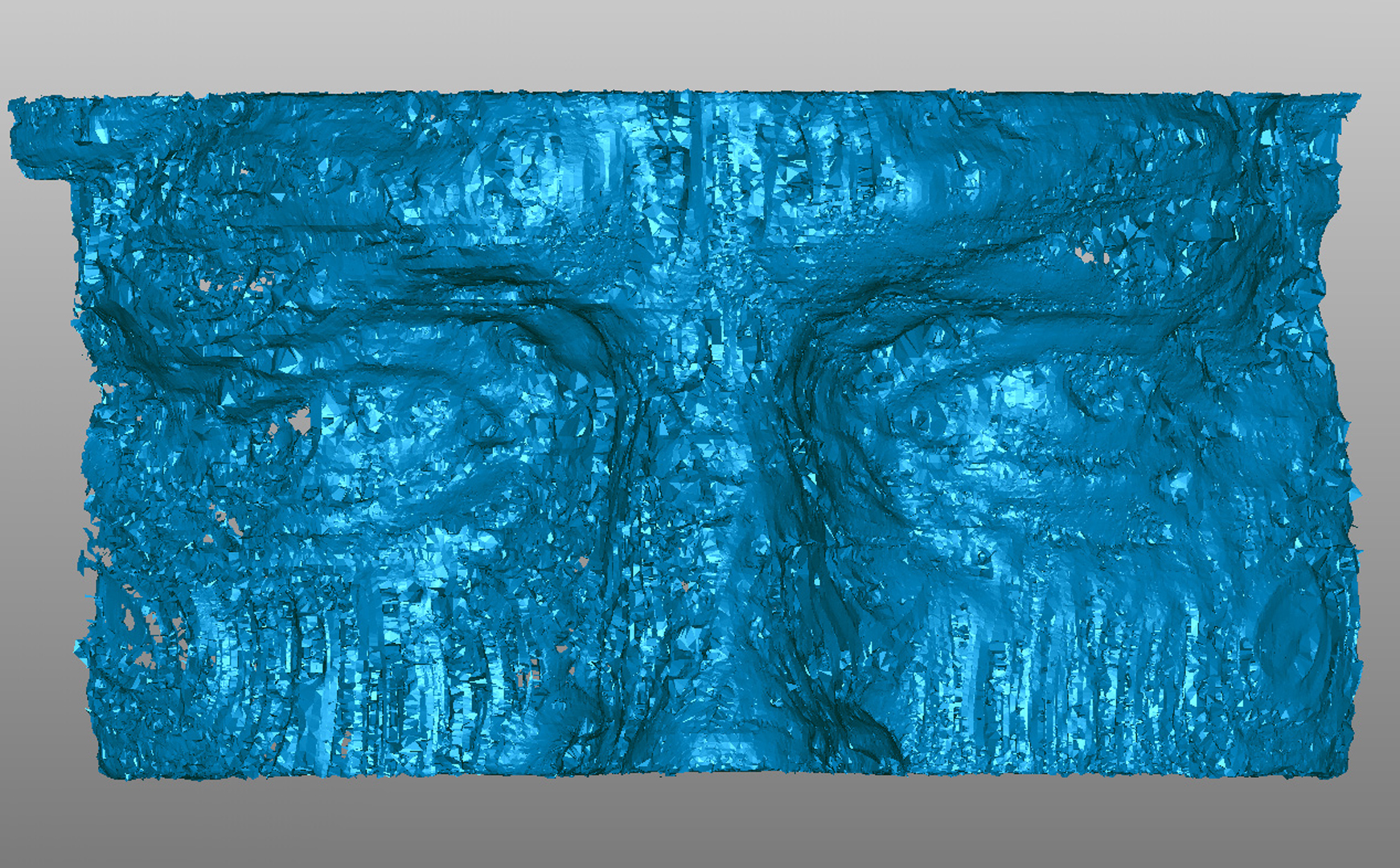“Protected interactive 3D graphics via remote rendering” by Koller, Turitzin, Levoy, Tarini, Croccia, et al. …
Conference:
Type(s):
Title:
- Protected interactive 3D graphics via remote rendering
Presenter(s)/Author(s):
Abstract:
Valuable 3D graphical models, such as high-resolution digital scans of cultural heritage objects, may require protection to prevent piracy or misuse, while still allowing for interactive display and manipulation by a widespread audience. We have investigated techniques for protecting 3D graphics content, and we have developed a remote rendering system suitable for sharing archives of 3D models while protecting the 3D geometry from unauthorized extraction. The system consists of a 3D viewer client that includes low-resolution versions of the 3D models, and a rendering server that renders and returns images of high-resolution models according to client requests. The server implements a number of defenses to guard against 3D reconstruction attacks, such as monitoring and limiting request streams, and slightly perturbing and distorting the rendered images. We consider several possible types of reconstruction attacks on such a rendering server, and we examine how these attacks can be defended against without excessively compromising the interactive experience for non-malicious users.
References:
1. COLLBERG, C., AND THOMBORSON, C. 2000. Watermarking, tamper-proofing, and obfuscation: Tools for software protection. Tech. Rep. 170, Dept. of Computer Science, The University of Auckland.Google Scholar
2. DEBEVEC, P., TAYLOR, C., AND MALIK, J. 1996. Modeling and rendering architecture from photographs: A hybrid geometry-and image-based approach. In Proc. of ACM SIGGRAPH 96, 11–20. Google ScholarDigital Library
3. ENGEL, K., HASTREITER, P., TOMANDL, B., EBERHARDT, K., AND ERTL, T. 2000. Combining local and remote visualization techniques for interactive volume rendering in medical applications. In Proc. of IEEE Visualization 2000, 449–452. Google ScholarDigital Library
4. GORTLER, S., GRZESZCZUK, R., SZELISKI, R., AND COHEN, M. F. 1996. The lumigraph. In Proc. of ACM SIGGRAPH 96, 43–54. Google ScholarDigital Library
5. LAURENTINI, A. 1994. The visual hull concept for silhouette-based image understanding. IEEE Trans. on Pattern Analysis and Machine Intelligence 16, 2, 150–162. Google ScholarDigital Library
6. LENSCH, H. P., HEIDRICH, W., AND SEIDEL, H.-P. 2001. A silhouette-based algorithm for texture registration and stitching. Graphical Models 63, 245–262. Google ScholarDigital Library
7. LEVOY, M., AND HANRAHAN, P. 1996. Light field rendering. In Proc. of ACM SIGGRAPH 96, 31–42. Google ScholarDigital Library
8. LEVOY, M., PULLI, K., CURLESS, B., RUSINKIEWICZ, S., KOLLER, D., PEREIRA, L., GINZTON, M., ANDERSON, S., DAVIS, J., GINSBERG, J., SHADE, J., AND FULK, D. 2000. The digital michelangelo project. In Proc. of ACM SIGGRAPH 2000, 131–144. Google ScholarDigital Library
9. LEVOY, M. 1995. Polygon-assisted jpeg and mpeg compression of synthetic images. In Proc. of ACM SIGGRAPH 95, 21–28. Google ScholarDigital Library
10. NIEM, W. 1997. Error analysis for silhouette-based 3D shape estimation from multiple views. In International Workshop on Synthetic-Natural Hybrid Coding and 3D Imaging.Google Scholar
11. OHBUCHI, R., MUKAIYAMA, A., AND TAKAHASHI, S. 2002. A frequency-domain approach to watermarking 3D shapes. Computer Graphics Forum 21, 3.Google ScholarCross Ref
12. PRAUN, E., HOPPE, H., AND FINKELSTEIN, A. 1999. Robust mesh watermarking. In Proc. of ACM SIGGRAPH 99, 49–56. Google ScholarDigital Library
13. RESSLER, S., 2001. Web3D security discussion. Online article: http://web3d.about.com/library/weekly/aa013101a.htm.Google Scholar
14. RUSINKIEWICZ, S., AND LEVOY, M. 2000. QSplat: A multiresolution point rendering system for large meshes. In Proc. of ACM SIGGRAPH 2000, 343–352. Google ScholarDigital Library
15. SCHARSTEIN, D., AND SZELISKI, R. 2002. A taxonomy and evaluation of dense two-frame stereo correspondence algorithms. International Journal of Computer Vision 47, 1-3, 7–42. Google ScholarDigital Library
16. SCHNEIER, B. 2000. The fallacy of trusted client software. Information Security(August).Google Scholar
17. SIMONS, D., AND LEVIN, D. 1997. Change blindness. Trends in Cognitive Sciences 1, 7, 261–267.Google ScholarCross Ref
18. SLABAUGH, G., CULBERTSON, B., MALZBENDER, T., AND SCHAFER, R. 2001. A survey of methods for volumetric scene reconstruction from photographs. In Proc. of the Joint IEEE TCVG and Eurographics Workshop (VolumeGraphics-01), Springer-Verlag, 81–100. Google ScholarDigital Library
19. STANFORD DIGITAL FORMA URBIS PROJECT. 2004. http://formaurbis.stanford.edu.Google Scholar
20. TARINI, M., CALLIERI, M., MONTANI, C., ROCCHINI, C., OLSSON, K., AND PERSSON, T. 2002. Marching intersections: An efficient approach to shape-from-silhouette. In Proceedings of the Conference on Vision, Modeling, and Visualization (VMV 2002), 255–262.Google Scholar
21. YOON, I., AND NEUMANN, U. 2000. Web-based remote rendering with IBRAC. Computer Graphics Forum 19, 3.Google ScholarCross Ref
22. ZHANG, R., TSAI, P.-S., CRYER, J. E., AND SHAH, M. 1999. Shape from shading: A survey. IEEE Transactions on Pattern Analysis and Machine Intelligence 21, 8, 690–706. Google ScholarDigital Library




